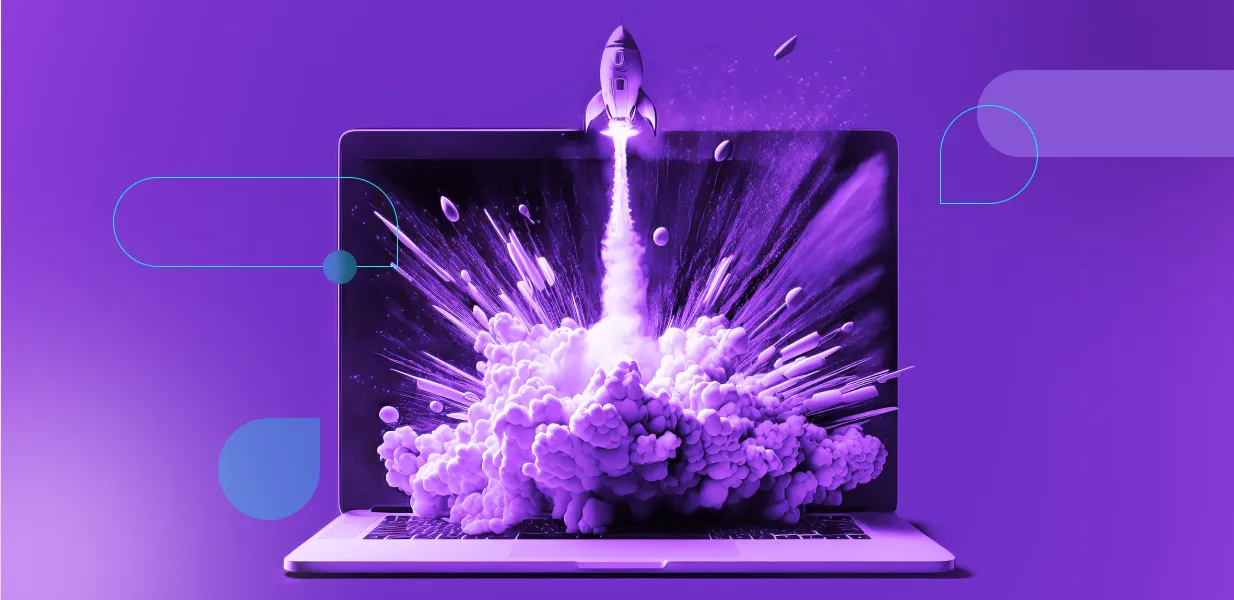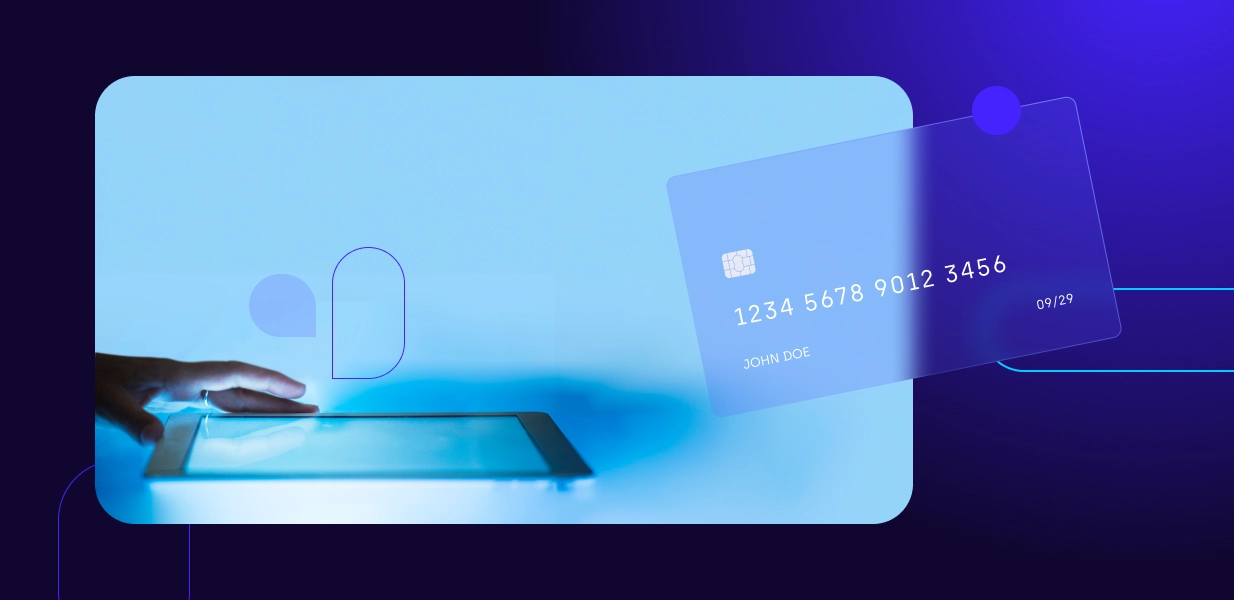
Digital transformation framework as the blueprint of the digital change

Improved performance, reporting in real-time, and shortened periods for management decisions became necessities for almost all businesses around the world during and after the COVID-19 pandemic. Logically, the transformation was needed for all business processes. However not any kind of transformation but the digital one - rethinking and improving business processes through the use of the latest technologies.
Digital transformation creates value by changing the company culture and answering customer expectations through implementing digitalized processes and aligning the business strategy to the needs of the digital age. It also represents a shift in business culture, requiring businesses to experiment often, challenge the established way of doing things, and follow digital transformation strategies.
But as with every business process - this also needs to follow a compelling plan that takes into consideration not only the business capabilities and new technologies but also the interaction of different teams and transformation strategies.
In this article, we will look at the different models of digital transformation frameworks, what logic they follow and what makes them essential for the future business model of the company.
Have you wondered if your company needs to revamp and reshape internal processes? You can find the answers in the text below.
What is a digital transformation framework?
Digital transformation frameworks give decision-makers a digital transformation roadmap with concrete actions for the realization of the digital transformation strategy that the company’s leadership has agreed on.
It lets the business leaders see the big picture of their business model, it analyses the operational efficiency in order to digitally transform it into a new operating model.
In general, every type of digital transformation framework includes the digitalization of 4 areas of the business:
- operations (incl. processes and systems)
- products and services
- organizational structure
- customer experience
These frameworks provide a blueprint, a formal plan that includes checklists, benchmarks, and standardized sequences to help a business enables more digital initiatives and new business models helping it to grow and evolve continuously.
Digital transformation frameworks show people at different levels of the organization how to cooperate further and make the digital transformation journey possible. In a nutshell, it can be defined as a system of rules letting an organization stick to a long-term strategy but be guided through the tricky landscape of digital transformation.
Tools used in digital transformation frameworks
Modern digital transformation frameworks use tools to align key performance indicators to customer data in order to empower digital transformation toward new business models.
Among others, tools that usually are implemented include cloud computing, multilevel customer interaction, smart sensors, and algorithms for big data analysis. Apart from implementing digitalization for the employees - such transformation can be made also towards digital marketing of the company and ways of collecting data for the customers
How to build a digital transformation framework?
The best way of building a digital transformation framework is to use data, measure how well your business is doing against competitors or peers and build the case for change from there. Below are a few important steps part of building a digital transformation framework.

Perform an assessment beforehand
Define the current state of affairs in your company and then, identify the motivation and available resources to be used in the upcoming transformation.
Formulate the business areas that require digitalization
Prioritize them in order of importance. You will need to re-think the processes and synchronize with the new system. Don’t forget it is a chain reaction so prepare carefully and follow a certain logic to avoid disruptions of the non-digitalized processes as a side effect.
Plan the transformation Into your annual budget
Don’t forget that this is a long-term investment and sometimes its profitability might need time to show and always leave some room for unexpected factors.
Create a roadmap with measurable KPIs
Key performance indicators are important not only at the end of the process. Having measurable goals can help you predict possible obstacles or elements that can slow down or completely derail the process of digitalization. Start with analyzing your competitors and learning from their mistakes to avoid on your journey.
Don't forget employees are a key factor
You, as a leader, will be a compass in this digital transformation journey and also in the change of the company culture. Therefore, you will need to justify and explain the changes in work processes to your employees, show them the digital transformation benefits, explain the processes and most importantly - cope with possible resistance.
Customers and partners are also part of the change
Inform them and try to outline what to expect again by emphasizing the benefits it will bring to your relationship. Even if this can require teaching them about new technologies - don’t be scared to be an innovator. It’s crucial for them to adopt new digital technology to keep choosing you.
Once implemented - assess the changes
Do surveys and collect feedback at every stage, collect data and use it to justify further calibrations of the system. Don’t forget also that sometimes new milestones might not align with old benchmarks so be constantly open for change.
Why is the digital transformation framework important?
The development of digital technologies is rapid and in many cases unpredictable. For many companies, it challenges the current operating models but also put in front of business leaders the need for an agile transformation strategy that can be adjusted at any time.
Every emerging technology or tendency can challenge the organization’s digital transformation strategy and thus a flexible framework comes in handy. The use of data science about customer behavior can give a true competitive advantage to the leadership team with a much more accurate picture of the wishes and needs of the target customers.
Having an automated tool for adjustment of the implemented new operating models can bring the business forward by combining corporate strategy and digital technology no matter what changes erupt and what this disruption refers to.
Cloud computing and technology strategy is revitalizing the company culture and re-position it in the digital world. Because the most successful are the companies that show flexibility to answer what customers expect and deliver new digitalized customer experiences in line with the digital trends in the business world.
Benefits of a digital transformation framework
A digital transformation framework eases the work of cross-functional teams and from one side takes into consideration different customer insights and changing external environments but also continues to reinforce the digital strategies and digital culture transformation.
This is possible through automation tools when framework logic is implemented. The old operating model is thought through the digital strategy and customer experience in order to form the right digital transformation framework.
It will ensure that no areas of the business are misunderstood or left behind in the process. Through digital marketing, significant data is collected to create tangible benchmarks, meaningful metrics, and, clear indications of progress as KPIs.
Business benefits of digital transformation frameworks
-
Business processes are significantly improved
After being digitally transformed, processes are clearly defined and optimized and there is no manual work, which might be preposition to human mistakes or it is minimal and easily trackable.
-
Employees’ productivity and reportability are improved
Implementation of tools lets employees focus much more on quality of work, creativity, and small improvement because through technology manual work has diminished and created space for much more mind-oriented tasks.
-
Constant communication across all the business departments
Either direct communication or real-time reporting - digital transformation enables the constant exchange of information between different parts of the organization as well as reporting to the C-level and management which speed up the decision-making process.
-
The company meets customers’ expectations
Because you know more about your customers, you can collect much more data and automize its usage. You don’t need to do surveys all the time when you can simply measure the time spent on the website or install a heat map following the moves of the customer. Every action in the digital world is trackable and it can bring valuable data to your company.
-
Coherence best depicts the business strategies
Constant exchange of information let different parts of the business take informed decisions and not cause collisions with other departments. As mentioned before - a constant flow of information between parts of the business might be done effortlessly and save time and money.
Employees' and customers' benefits of a digital transformation framework
-
Digitized business models
Optimized, trackable, transparent, and minimally dependent on human error - these best describe the operating model after digital transformation.
-
Talent enhancement within the enterprise
Surely real-time reporting and the possibility to measure productivity bring a competitive advantage for hardworking employees to outstand and be awarded for that. Management can have a much more realistic overview of the work of each employee and factor it into the annual reviews. Needless to say - rewarding hard work raises the morale of the team and encourages employees to raise their productivity.
-
Customer-centric products and services
For every business, there are one group of people who is at the same time - very important but also not always predictable and easy to speak with - customers. Through digital tools, digital marketing, and automation for many companies are much easier to meet customer expectations or even predict customer behavior.
-
Innovative and digital culture
From re-shaping of the business strategy through the execution of usual daily tasks - technologies bring innovation to the office, making room for more ideas to come from different parts of the system.
-
Collaborative leadership
Technological advancements can shorten the distance between usual employees and management but can also put pressure on different departments’ leads to work more closely together and share good practices. Thus collaboration is almost inevitable and a more unified approach is applied.
3 Common mistakes in the implementation of digital transformation frameworks
A good digital transformation framework also shapes the areas where more attention is required. Three of the most common mistakes that often accompany the implementation of the digital transformation framework come as a result of the digital transformation challenges.
Transformation focuses only on technology
70% of transformation efforts fail…and at the heart of most failures is not the technology, it’s the people. Because it turns out that digital transformation should focus much more on transformation than on digital. Re-thinking the processes is important, their breaking of the step-by-step model and thoroughly analyzing where technology advances can be beneficial and could improve the final outcome.
Internal communication is often neglected
Internal teams often remain unaware of changes and corporate leaders deliberately avoid being transparent in order to keep confidentiality. This creates miscommunication, lack of understanding, and often - repetition of the same action by different units.
Company culture is ignored
Digital change does not take into consideration the company’s culture change and the ways employees think. Despite 87% of organizations believing that digital will disrupt their industry, 87% acknowledged that they don’t have the right leaders and culture. Organizations that have the culture, processes, and technology in place from following a successful digital transformation framework are faster to break even on the new products and services that are launched to market.
How do you choose the right framework for your business or organization?
Digital transformation frameworks defer mainly by two main components - if at the start of the process there are clearly defined business processes or if their exact definition is ongoing with the digital transformation process.
Agile is a synonym of flexible and fast
The term agile is combining 4 main values and 12 main principles. All of them emphasize the need for a transition toward real-time feedback and constant communication with the customer so the initial request is aligned with current needs and strategy.
Instead of spending months on the definition and analysis of business processes - by the agile methodology the digital transformation framework is easily adjustable according to the ongoing findings and client feedback.
Still - such a digital transformation framework doesn’t mean improvisation. It still follows strict checklists and linear, sequential phases in a program, uses digital tools, and in the best-case scenario is led by an experienced partner.
Running against the standard waterfall technology - agile methodology is oriented to fast deployment and reaching the end-user even when just validated. In such a fast-changing environment the usage of the software is of utmost importance in order not to leave some areas unattached and take them all into consideration when change is realized.
Thus digital transformation leaders, implementation consultants, and company stakeholders can at all times have the most recent state of play for the development of the process. Agile logic requires fast deployment and learning from feedback to improve technology throughout the organization.
Thorough analysis redefines steps ahead
Another methodology for the implementation of a digital transformation framework is to take a significant analysis of the current business structure.
Having clearly defined business processes for continuous improvement, and measurement of those business processes, can reduce waste and defects, and result in maximizing customer value while increasing efficiency and effectiveness throughout an organization.
It is called Lean Six Sigma and roots back to some transformation models of the 90s but with the inclusion of much more tools and real-time data. Lean Six Sigma methodology emphasizes measurement and metrics to ensure the optimization of operations efficiency and the functioning results of an organization.
Frameworks unified around one important aspect
Another framework model that actually can follow both Agile or Lean Six Sigma or other Framework logic can be organized with the main focus on one particular factor as most important: customer, human leadership factor, etc.
- Customer experience and customer journeys methodology focuses on clearly defined business processes and builds its main KPIs around the customer - their behavior, experience, and the whole journey.
- Change Management ensures that we properly address the human factor of transformation.- ADKAR is an acronym for the five outcomes an individual needs to achieve for a change to be successful: Awareness, Desire, Knowledge, Ability, and Reinforcement.
Ready to begin your digital transformation journey?
There are various ways to approach the digital transformation of a company and completely different frameworks that can be followed. And still - even if the business leadership team is certain of the path - it can come across several drawbacks lurking behind the corner so you’d better have a trusted partner.
Resolute Software’s professionals have years of experience in guiding companies through their digital transformation processes. Get in touch to learn more about how we can contribute to your organization’s digital transformation efforts and work with a trusted partner in order to avoid unexpected difficulties on your journey.
FAQs
A digital transformation framework is an organized system of automated processes helping to implement a company’s digital transformation strategy by considering ongoing changes that can erupt after the start of implementation. It includes a roadmap that covers all levels of the organization and serves as a common reference point digitally organized in tools that implement the pre-agreed digital transformation strategy.
Digital transformation methodology is a framework model that organizes the steps of the implementation by putting different elements at the center of the digital transformation framework such as flexibility, customer experience, or clearly defined business processes.





